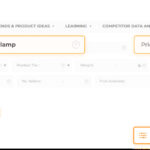It’s a common misconception that credit cards are only for spending. While their primary function is to facilitate purchases on credit, there are situations where you might need to access cash using your credit line. The key is understanding how to navigate this process without incurring hefty fees and charges that can quickly eat away at your finances.
This guide will explore legitimate ways to “withdraw money” or, more accurately, access the value associated with your credit card without falling into the trap of expensive cash advances and other avoidable fees. We’ll delve into strategies that savvy credit card users employ to manage their finances effectively and responsibly.
Understanding the Pitfalls: Cash Advances and Associated Costs
The most direct method of “withdrawing money” from a credit card is through a cash advance. This allows you to get cash from an ATM or bank using your credit card. However, this convenience comes at a significant price.
Cash advances typically come with:
- High APRs: The Annual Percentage Rate (APR) for cash advances is almost always higher than the purchase APR, often significantly so. Interest accrues immediately, with no grace period.
- Cash Advance Fees: A fee is charged for each cash advance, usually a percentage of the withdrawn amount or a flat fee, whichever is higher. This fee is added to your balance immediately.
- Lower Credit Limit: Your cash advance limit is often a smaller portion of your overall credit limit.
These charges can make cash advances an extremely expensive way to access funds, and should generally be avoided unless it’s an absolute emergency and you have no other options.
Smarter Alternatives: Accessing Value Without Direct Withdrawal
Instead of direct cash withdrawals, consider these more financially sound strategies to leverage your credit card and access its value:
1. Cash Back Rewards: Turning Spending into Savings
Many credit cards offer cash back rewards on purchases. This is arguably the most effective way to “withdraw money” indirectly. By using your cash back credit card for everyday spending and paying your balance in full each month, you earn a percentage of your spending back in cash.
This cash back can be redeemed in various ways, including:
- Statement Credits: Apply your cash back directly to your credit card balance, reducing your overall spending.
- Direct Deposits: Have your cash back deposited directly into your bank account.
- Checks: Receive a physical check for your cash back amount.
Essentially, you are “withdrawing money” you’ve already spent, making your everyday purchases more affordable over time.
2. Redeeming Rewards Points for Cash or Gift Cards
If your credit card earns rewards points instead of cash back, you often have the option to redeem these points for cash back or gift cards. While the redemption value for cash or gift cards might not always be the highest compared to travel redemptions, it still provides a tangible way to access monetary value from your credit card rewards.
Check your credit card issuer’s rewards portal for options to redeem points for cash back, gift cards to popular retailers, or even prepaid debit cards.
3. Strategic Use of Balance Transfers (with Caution)
While balance transfers typically involve fees, they can be strategically used in certain situations to manage debt and potentially free up cash flow. If you transfer a high-interest balance to a credit card with a 0% introductory APR for balance transfers, you can save significantly on interest charges.
By lowering your interest payments, you effectively free up money that can be used for other purposes. However, be mindful of:
- Balance Transfer Fees: These fees are usually a percentage of the transferred balance (e.g., 3-5%). Calculate if the fee is worth the interest savings.
- Introductory Period: The 0% APR is temporary. Ensure you can pay off the balance before the promotional period ends, or interest will accrue at the regular balance transfer APR.
Balance transfers are not direct cash withdrawals, but they can be a tool to manage finances and indirectly improve your cash flow.
4. Emergency Situations and Responsible Cash Advances
In genuine emergencies where you absolutely need cash and have no other immediate options, a cash advance might be considered as a last resort. However, it’s crucial to:
- Borrow Only What You Need: Minimize the amount you withdraw to reduce fees and interest charges.
- Repay Quickly: Prioritize paying off the cash advance balance as quickly as possible to minimize interest accumulation.
- Understand the Costs: Be fully aware of the APR and fees associated with the cash advance before proceeding.
Explore all other avenues before resorting to a cash advance. Consider borrowing from friends or family, exploring personal loans, or utilizing emergency savings if available.
Key Takeaways for Smart Credit Card Usage
- Avoid Cash Advances: Direct cash withdrawals from credit cards are expensive and should be avoided if possible.
- Maximize Rewards: Utilize cash back or rewards credit cards for everyday spending and redeem rewards strategically.
- Understand Fees: Be aware of all potential credit card fees, including cash advance fees, balance transfer fees, late payment fees, and over-limit fees.
- Budget and Spend Responsibly: Manage your credit card spending effectively to avoid unnecessary fees and debt.
- Pay in Full: Always aim to pay your credit card balance in full each month to avoid interest charges and maintain a healthy credit score.
By understanding the costs associated with direct cash withdrawals and exploring smarter alternatives like cash back rewards and responsible credit card management, you can effectively access the value of your credit card without falling prey to unnecessary fees and charges. Using your credit card strategically can be a powerful financial tool, but it requires knowledge and responsible habits.
